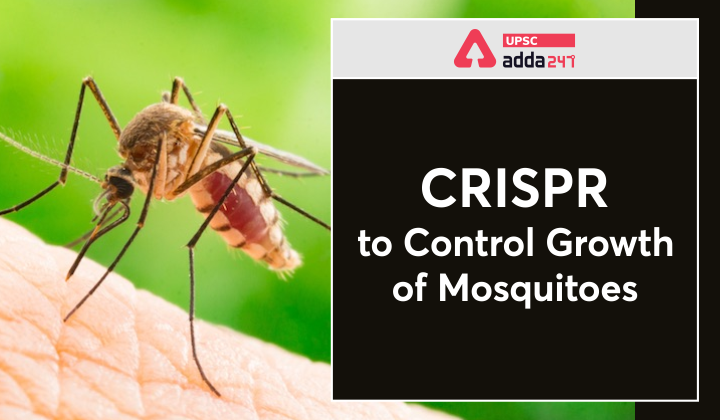Table of Contents
Relevance
GS 3: Science and Technology- developments and their applications and effects in everyday life.
Context
Recently, researchers have created a system that restrains populations of mosquitoes by using CRISPR-based genetic engineering.
Key points
Sterile Insect Technique
- The sterile insect technique is an environmentally-friendly insect pest control method involving the mass-rearing and sterilization.
- SIT uses radiation of a target pest, which is followed by the systematic area-wide release of the sterile males over defined areas, where they mate with wild females.
- It results in no offspring and a declining pest population, which helps in decreasing the instances of diseases such as dengue and malaria.
What is pgSIT?
- The “precision-guided sterile insect technique” (pgSIT) is a SIT that alters genes linked to male fertility—creating sterile offspring—and female flight in Aedes aegypti, the mosquito species responsible for spreading diseases including dengue fever, chikungunya and Zika.
- The pgSIT uses CRISPR to sterilise male mosquitoes and render female mosquitoes (which spread disease) flightless.
Two enabling features of pgSIT
- It is self-limiting that means it tends to go away on its own, without any external treatment.
- It is not predicted to persist or spread in the environment.
pgSIT to contain mosquito
- pgSIT eggs can be shipped to a location threatened by mosquito-borne disease or developed at an on-site facility that could produce the eggs for nearby deployment.
- Once the pgSIT eggs are released in the wild, sterile pgSIT males will emerge and eventually mate with females, driving down the wild population as needed.
About CRISPR
- Clusters of Regularly Interspaced Short Palindromic Repeats (CRISPR) is a family of DNA sequences found in the genomes of prokaryotic organisms such as bacteria and archaea.
- CRISPR technology is a simple yet powerful tool for editing genomes. It allows researchers to easily alter DNA sequences and modify gene function.
- Its many potential applications include correcting genetic defects, treating and preventing the spread of diseases and improving crops.
- CRISPR is s shorthand for “CRISPR-Cas9.” Where Cas9 is an enzyme that acts like a pair of molecular scissors, capable of cutting strands of DNA.
- CRISPR-Cas9 is a unique technology that enables geneticists and medical researchers to edit parts of the genome by removing, adding or altering sections of the DNA sequence.




 TSPSC Group 1 Question Paper 2024, Downl...
TSPSC Group 1 Question Paper 2024, Downl...
 TSPSC Group 1 Answer key 2024 Out, Downl...
TSPSC Group 1 Answer key 2024 Out, Downl...
 UPSC Prelims 2024 Question Paper, Downlo...
UPSC Prelims 2024 Question Paper, Downlo...





